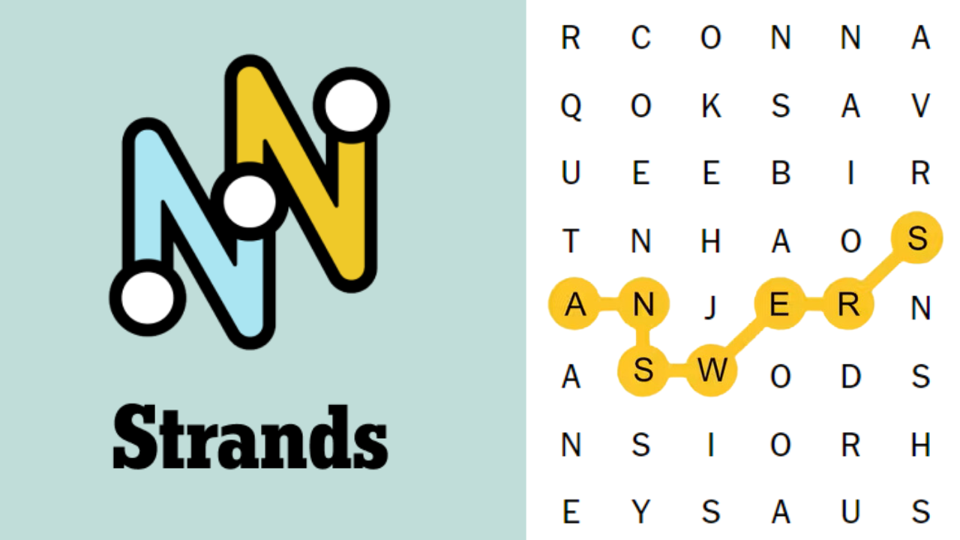Understanding Strands Answers
The term “strands answers” refers to a framework characterized by interconnected elements that contribute to a comprehensive understanding of a given topic or problem. These strands serve as the foundational threads that weave together ideas and concepts across various disciplines, such as education, writing, and research. Each strand represents a distinct aspect or component of a subject; when synthesized, they produce a holistic perspective that enhances comprehension and analytical skills.
In the field of education, strands answers are often utilized to break down complex subjects into manageable units. Educators employ this approach to help students grasp intricate concepts by focusing on individual strands that represent fundamental ideas. As learners expand their understanding through these interconnected strands, they develop critical thinking skills essential for problem-solving. This method allows educators to guide discussions and foster engagement through a structured examination of key ideas.
Similarly, in writing, strands answers play a vital role in constructing well-organized arguments or narratives. Writers can delineate their ideas into various strands, ensuring that each section cohesively contributes to the overall message. By incorporating strands in their writing, authors can clarify thought processes and improve the readability of their work, allowing readers to navigate complex information more effectively.
In research, strands answers establish a framework for analyzing data and synthesizing findings. By identifying specific strands within research questions, scholars can concentrate on relevant information while considering the broader context. This structured approach aids in producing valid conclusions and enhances the credibility of the research outcomes.
Overall, the concept of strands answers is pivotal in cultivating deeper understanding and facilitating effective communication across multiple domains. By recognizing and utilizing these strands, individuals can refine their analytical perspectives and address challenges with greater efficacy.
The Role of Strands Answers in Education
Strands answers play a pivotal role in the educational landscape, particularly in the realms of curriculum development and assessment. The integration of strands answers facilitates a structured approach to education, allowing educators to develop comprehensive lesson plans that cater to the diverse needs of students. By leveraging strands answers, teachers can ensure that their instructional strategies are not only aligned with learning objectives but also responsive to various learning styles and abilities.
One significant benefit of incorporating strands answers into lesson planning is the enhancement of student engagement. When educators utilize strands answers to design lessons, they create a learning environment that is more interactive and relevant to students’ experiences. This relevance fosters a deeper connection to the material, encouraging students to participate actively in their learning process. As a result, the incorporation of strands answers can lead to improved learning outcomes, with students demonstrating a better grasp of the subject matter.
Additionally, strands answers offer a framework that assists teachers in assessing student progress comprehensively. By employing strands answers as a benchmark, educators can track and measure student understanding over time, thus allowing for timely interventions when needed. This method not only supports struggling learners but also provides advanced students with opportunities to extend their knowledge further.
To effectively implement strands answers, teachers can utilize various strategies in the classroom. For instance, they can develop differentiated instructional approaches that cater to diverse learning preferences, creating tailored assignments based on the strands answers. Collaborative learning activities, where students work in diverse groups to achieve common goals, can also promote the application of strands answers while enhancing peer interaction.
In conclusion, the strategic incorporation of strands answers in educational settings significantly enriches the teaching and learning experience. By aligning curriculum development and assessment practices with strands answers, educators can foster an inclusive and engaging environment that ultimately benefits all students.

Strands Answers in Research and Writing
In the realm of research and writing, the concept of strands answers plays a pivotal role in fostering critical thinking and structured argumentation. Strands answers are essentially the various threads of thought that contribute to a cohesive understanding of a topic. When researchers and writers engage with these answers, they create a framework that enhances the clarity of their ideas and the coherence of their arguments. This is particularly important in academic papers, essays, and other written forms, where precision in communication is paramount.
The process of generating effective strands answers involves several essential steps. To begin with, brainstorming is a critical technique. Writers should set aside time to ideate freely about their topics, gathering all relevant thoughts and perspectives. This can be achieved through mind mapping, free writing, or even group discussions, each of which can reveal intricate connections that might otherwise remain hidden. Once a pool of ideas is established, the next step is organizing these strands. This can be accomplished by categorizing information into thematic clusters, which enables the writer to identify the most compelling angles and supporting evidence for their arguments.
Moreover, strands answers facilitate a logical flow in writing. By clearly articulating each strand and its relevance to the overarching thesis, writers can effectively guide their readers through the complexities of an argument. This method not only enhances clarity but also fosters engagement, allowing readers to follow the writer’s thought process with greater ease. Ultimately, employing strands answers in research and writing is a crucial technique that elevates the standard of academic discourse. This approach not only aids in organizing ideas but also cultivates a method of thinking that is reflective, structured, and critical, which are key attributes of effective writing.
Practical Tips for Developing Effective Strands Answers
Creating effective strands answers requires a strategic approach that involves refining your questions, establishing connections between disparate ideas, and critically evaluating the strength of your responses. One of the first steps is to ensure that your questions are well-defined and specific. Instead of vague inquiries, opt for precise questions that guide your exploration of the topic. This clarity will facilitate more focused research and lead to stronger strands answers.
Next, consider the relationships between the different ideas associated with your topic. Actively look for links and common themes that can be woven together to strengthen your answers. Utilizing mind mapping or outlines can be beneficial for visualizing these connections. By identifying how various concepts relate to one another, you can build a more cohesive and comprehensive response.
Furthermore, evaluating the strength of your strands answers is crucial. Critically assess the evidence and examples you provide to support your assertions. Are they credible and relevant? Questions like these help you refine your arguments and ensure they stand firm against scrutiny. It is also essential to consider counterarguments to how they might affect the validity of your position. This rigorous evaluation enhances the overall quality of your strands answers and makes them more persuasive.
Another common pitfall to avoid is the temptation to overcomplicate your answers. Strive for clarity and conciseness, as convoluted explanations can dilute your message. Always strive for simplicity without sacrificing depth. Finally, utilizing resources such as academic journals, articles, and online forums can provide insights and different perspectives that can enrich your understanding and enhance the quality of your responses. Through applying these practical tips, you will be better equipped to articulate clear, well-supported strands answers in various contexts.
